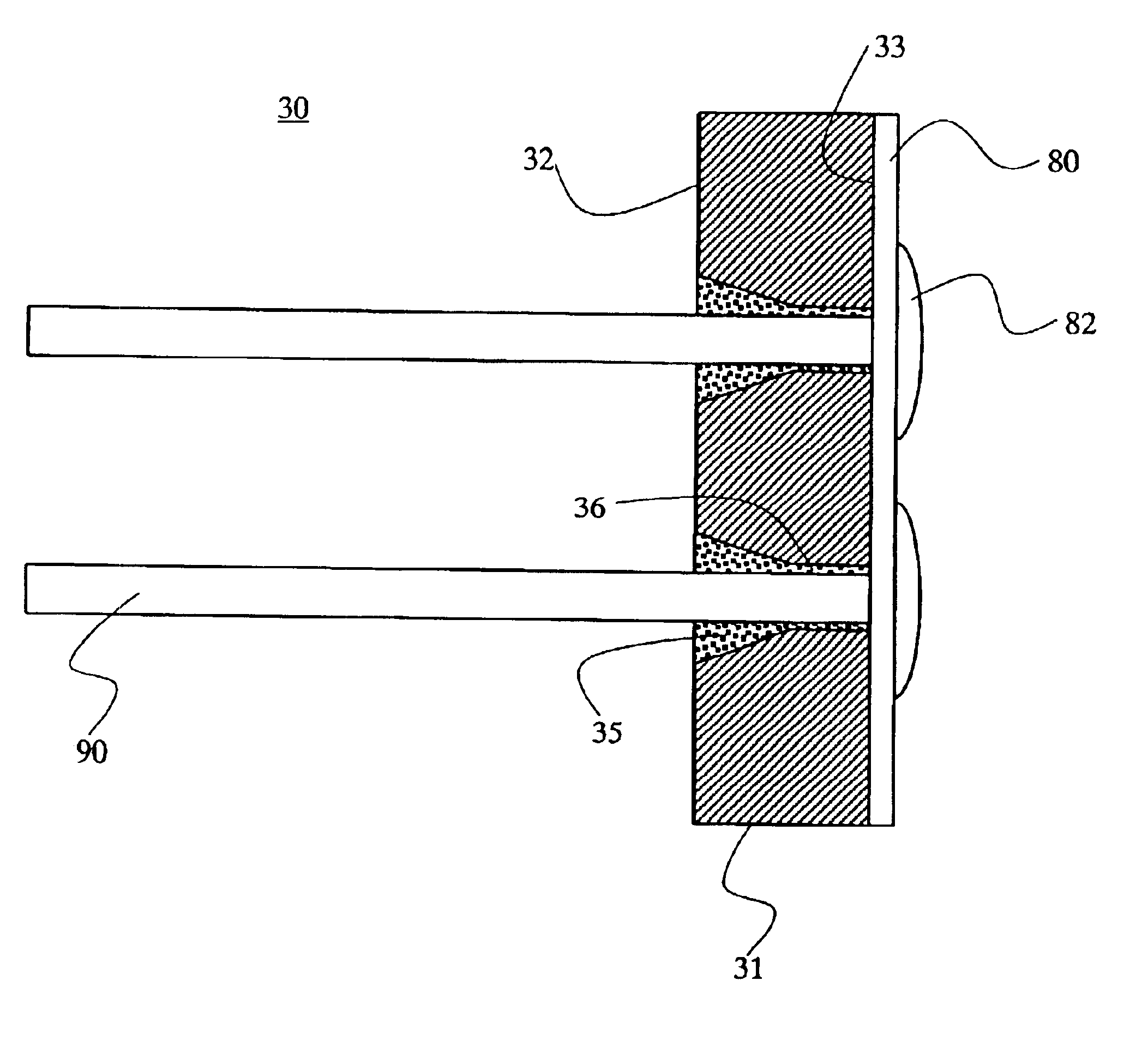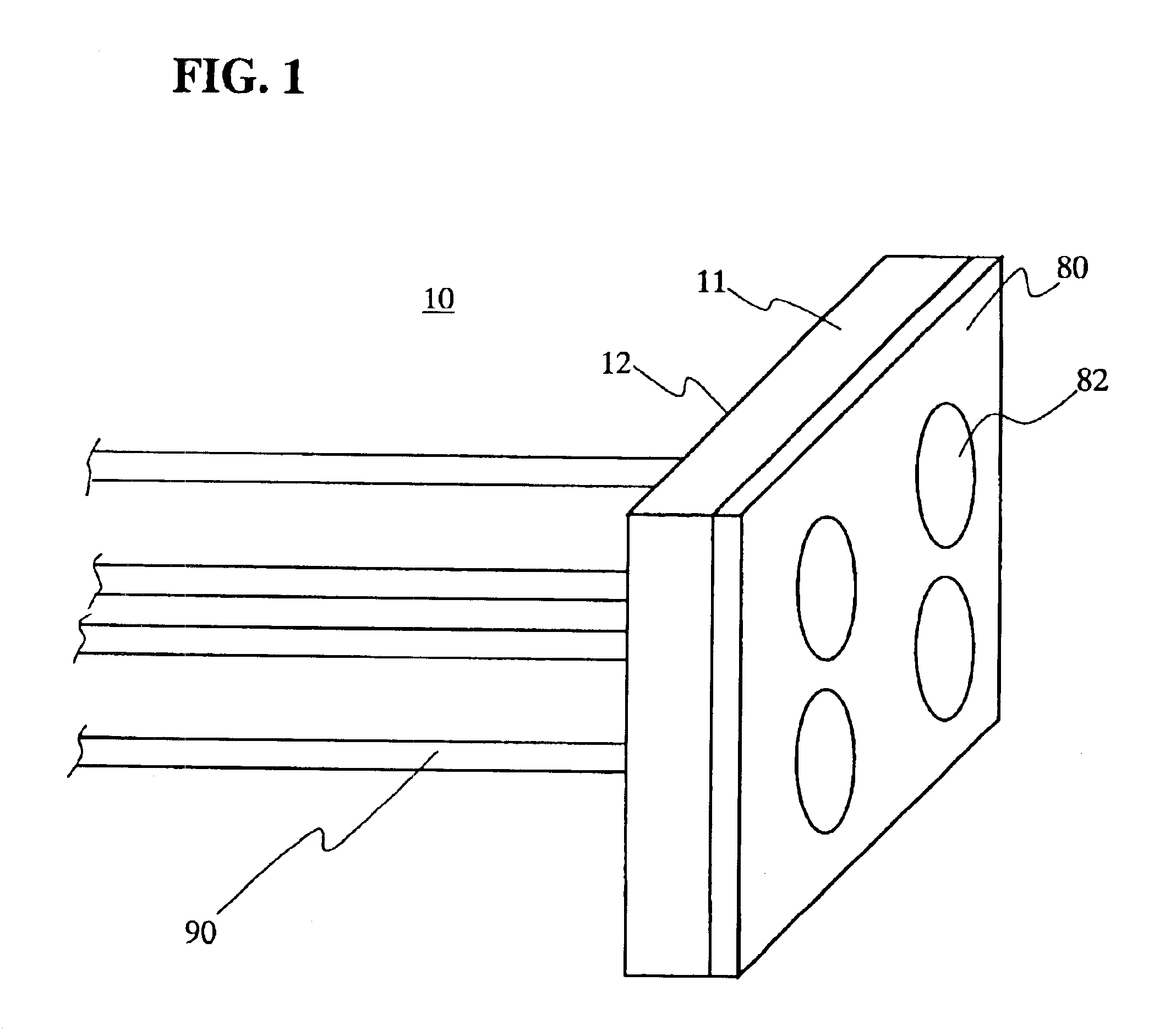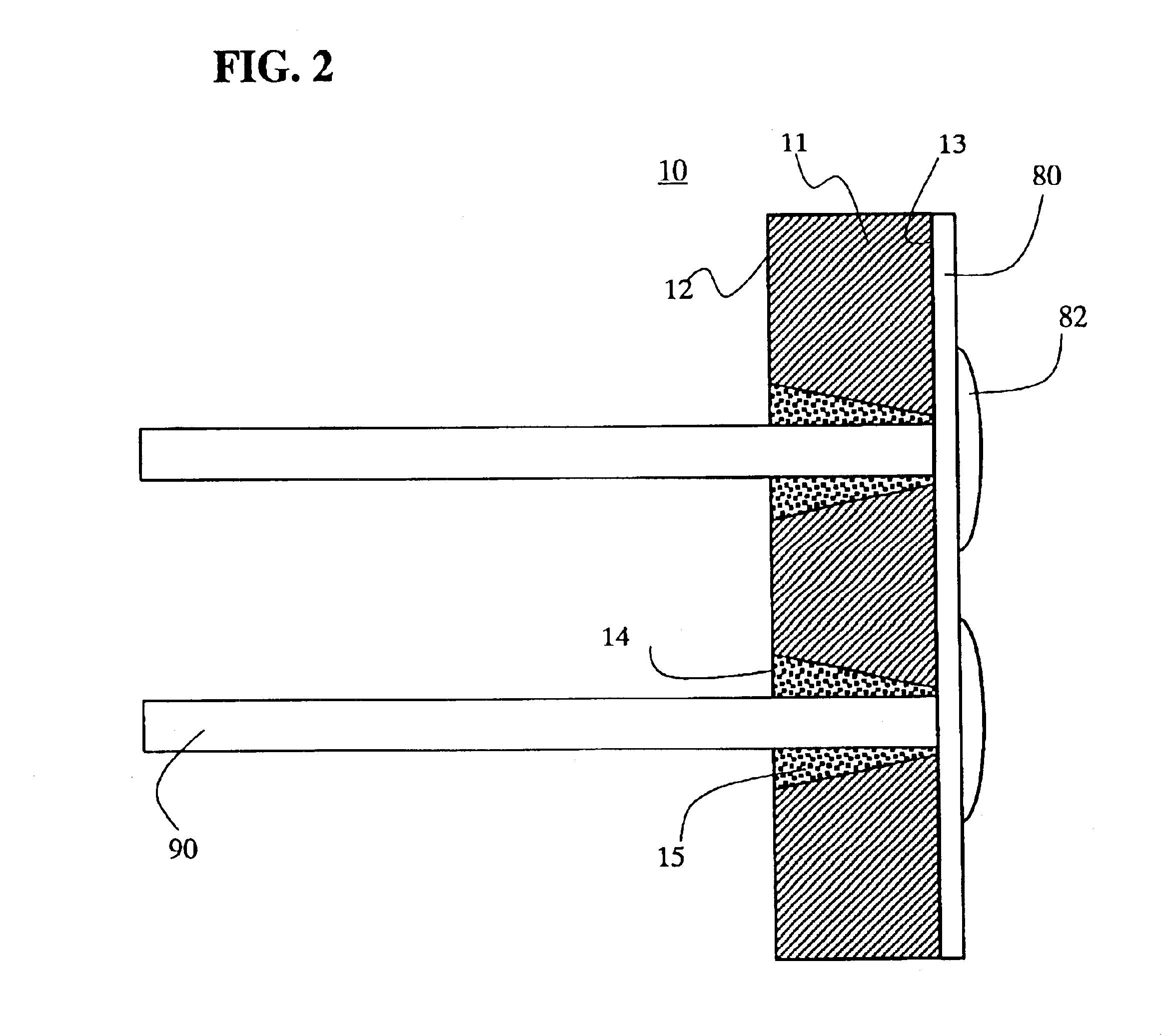Optical fiber array with lenses
a technology of optical fiber array and optical fiber, applied in the field of optical fiber array with lenses, can solve the problems of difficult to make an optical fiber array, large number of optical fibers must be used for communication involving an enormous amount of information, and large number of optical fibers to achieve the effect of facilitating connection operations
- Summary
- Abstract
- Description
- Claims
- Application Information
AI Technical Summary
Benefits of technology
Problems solved by technology
Method used
Image
Examples
example 1
[0031]With reference to FIGS. 1 and 2, description will be given of an optical fiber array with lenses 10 according to EXAMPLE 1 of the present invention. FIG. 1 is a perspective view, viewed on a collimator lens side, of the optical fiber array with lenses 10. FIG. 2 is a cross section of the optical fiber array with lenses 10 along the line of tapered through-holes and optical fibers of the optical fiber array. The optical fiber array with lenses 10 has four optical fibers with lenses 90 arranged in two stages and two rows. The arrangement pitch in the vertical direction of the optical fibers with lenses is different from that in the horizontal direction of these fibers. A base plate 11 has a first end surface 12 and a second end surface 13 opposite to the first end surface 12. The first end surface 12 is parallel with the second end surface 13. The base plate 11 has openings 14 arranged on the first end surface 12 and through-holes 15 each opened from the corresponding opening 14...
example 2
[0039]With reference to FIG. 3, description will be given of an optical fiber array with lenses 20 according to EXAMPLE 2 of the present invention. FIG. 3 is a cross section of the optical fiber array with lenses along the line of tapered through-holes and optical fibers of the optical fiber array. In FIG. 3, the same parts as those in FIGS. 1 and 2 for EXAMPLE 1 are denoted by the same reference numerals. The optical fibers 90 are each inserted into a corresponding tapered through-hole 25 and are each then secured in the tapered through-hole using a refraction index matching agent 28. Both a second end surface 23 of a base plate 21 and an end surface 84 of a microlens array 80′ are polished so that an angle θ is about 8 degrees with the optical axis of the optical fiber 90. Then, an end surface 84 of the microlens array 80′ is joined to the second end surface 23 of the base plate 21 using a refraction index matching agent. Since the tip surface of each optical fiber is tilted at an...
example 3
[0040]With reference to FIG. 4, description will be given of an optical fiber array with lenses 30 according to EXAMPLE 3 of the present invention. FIG. 4 is a cross section of the optical fiber array with lenses along the line of tapered through-holes and optical fibers of the optical fiber array. In FIG. 4, the same parts as those in FIGS. 1 and 2 for EXAMPLE 1 are denoted by the same reference numerals. Through-holes are each formed from a corresponding one of the openings arranged on a first end surface 32 of a base plate 31, toward a second end surface 33. The through-hole is composed of a tapered hole 35 having a tapered inside wall extending toward the second end surface and a parallel hole 36 having a parallel inside wall formed between an end of the tapered inside wall and the opening on the second end surface 33 and having a uniform diameter. The microlens array 80, which has the plurality of collimator lenses 82, is secured on the second end surface 33 of the base plate 3...
PUM
 Login to View More
Login to View More Abstract
Description
Claims
Application Information
 Login to View More
Login to View More - R&D
- Intellectual Property
- Life Sciences
- Materials
- Tech Scout
- Unparalleled Data Quality
- Higher Quality Content
- 60% Fewer Hallucinations
Browse by: Latest US Patents, China's latest patents, Technical Efficacy Thesaurus, Application Domain, Technology Topic, Popular Technical Reports.
© 2025 PatSnap. All rights reserved.Legal|Privacy policy|Modern Slavery Act Transparency Statement|Sitemap|About US| Contact US: help@patsnap.com



